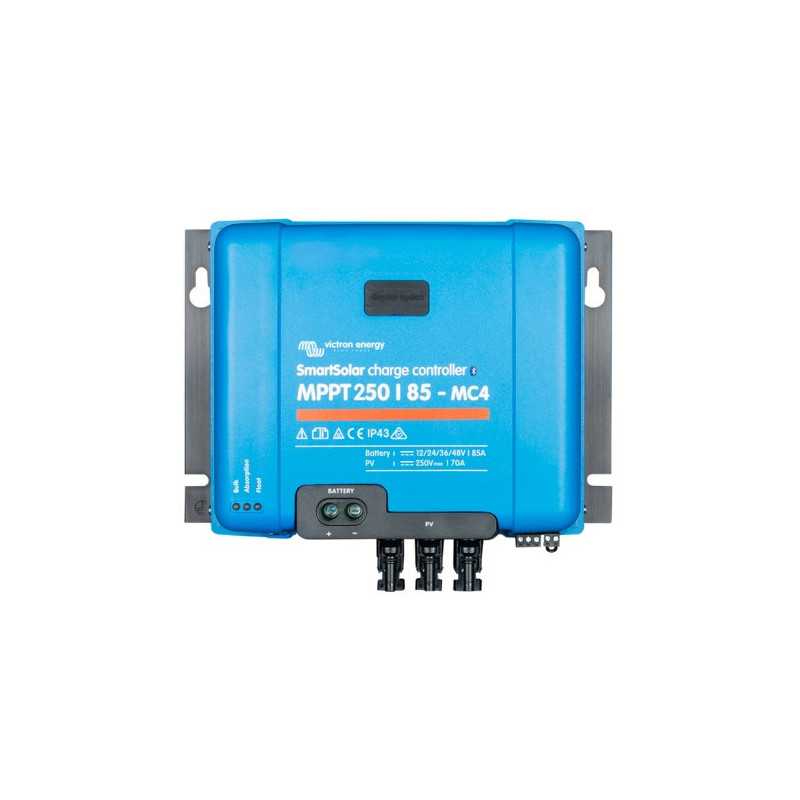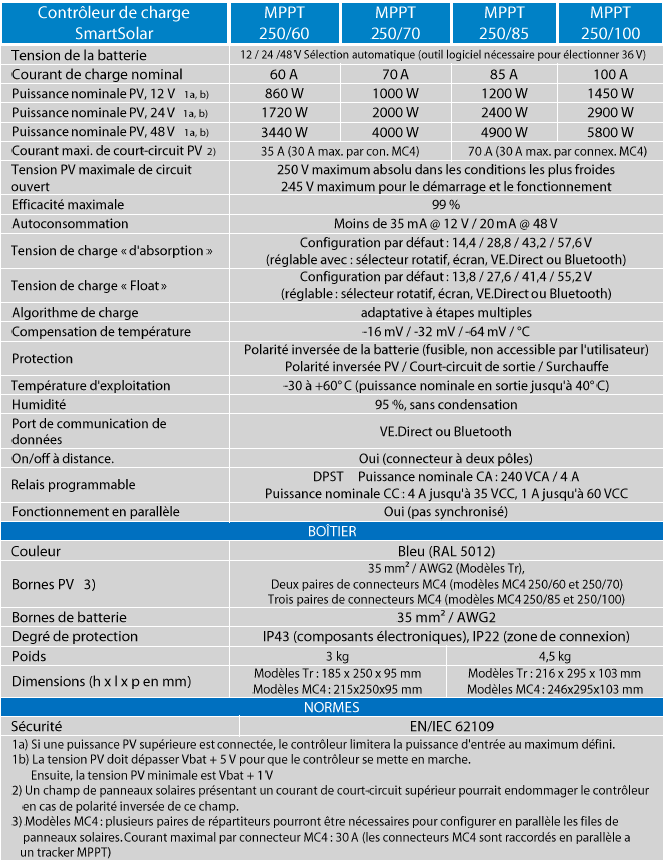MPPT charge controller Victron SmartSolar 250/60 to 250/100 with screws or MC4 type
Especially under cloudy skies, when light intensity is constantly changing, an ultra-fast MPPT controller will improve energy harvesting by up to 30% compared with PWM charge controllers, and by up to 10% compared with slower MPPT controllers.
MPPT charge controller Victron SmartSolar 250/60 to 250/100 with screws or MC4 type
Ultra-fast maximum power point tracking (MPPT).
Especially under cloudy skies, when light intensity is constantly changing, an ultra-fast MPPT controller will improve energy harvesting by up to 30% compared with PWM (pulse-width modulation) charge controllers, and by up to 10% compared with slower MPPT controllers.
Advanced maximum power point detection in shaded conditions
Under shadowing conditions, two or more maximum power points may be present on the voltage-power curve. Conventional MPPTs tend to lock on to a local MPP which
not necessarily the optimum MPP. SmartSolar's innovative algorithm will always maximize energy recovery by locking on to the optimal MPP.
Outstanding conversion efficiency
No fan. Maximum efficiency in excess of 98%.
Flexible charging algorithm
Fully programmable charging algorithm (see the Software section of our website) and eight pre-programmed algorithms selectable with a rotary switch (see manual for details).
Extended electronic protection
Protection against overheating and power reduction in case of high temperature.
Protection against reversed PV polarity and PV short-circuits.
Protection against reversed PV current.
Internal temperature sensor
Compensates for Float and Absorption charge voltages as a function of temperature.
Integrated Bluetooth Smart: no electronic key required
The wireless solution for configuring, monitoring and updating the controller using Apple and Android phones, tablets or other devices.
VE.Direct
For a wired data connection to a Color Control panel, PC or other devices.
Remote on/off
For connection to a VE.BUS BMS, for example.
Programmable relay
Can be programmed (e.g. with a Smartphone) to trigger an alarm, or other events.
Optional: plug-in LCD display
Simply remove the rubber seal protecting the socket on the front of the controller, and insert the display.





